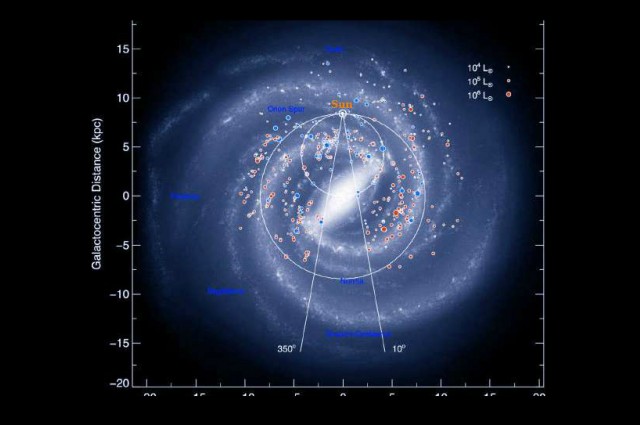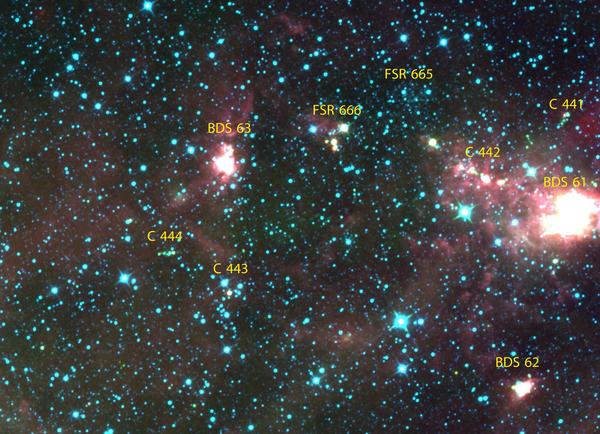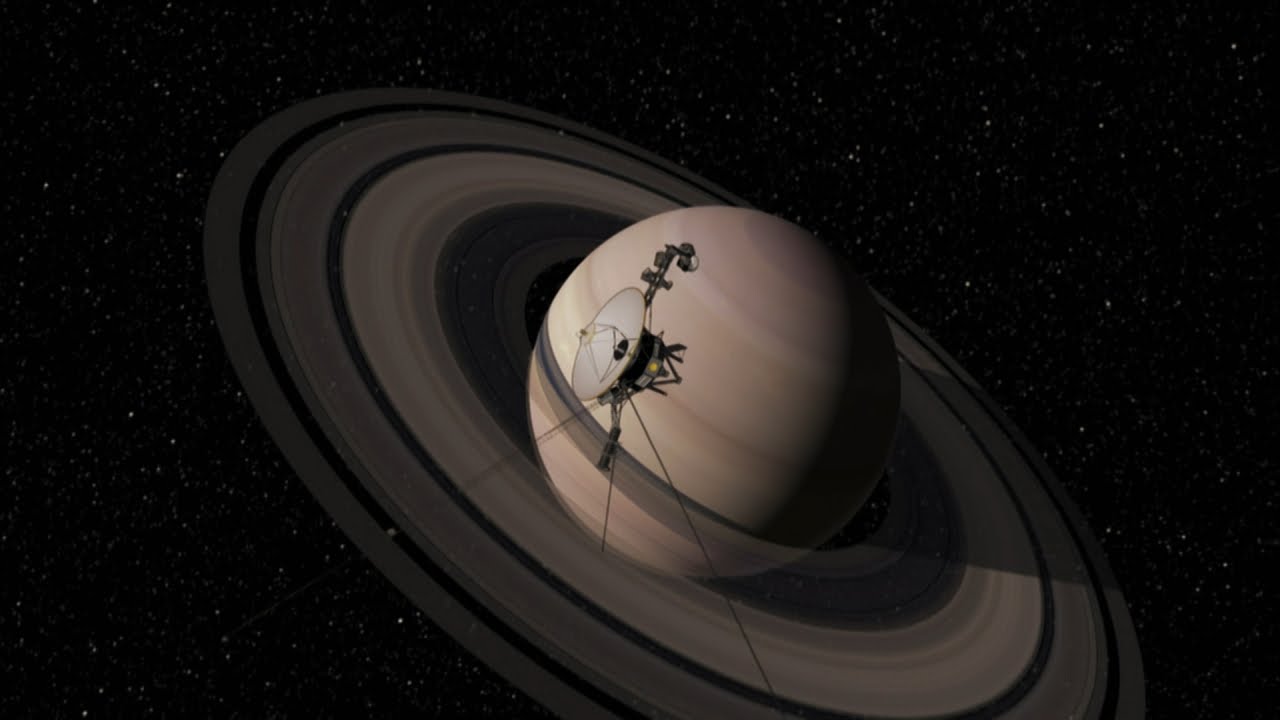
It is well known that the Milky Way is a spiral galaxy. However, in a classic case of not being able to see the forest for the trees, we know much less about its shape than we do of similar galaxies millions of light-years away. Now, however, Brazilian astronomers think they have solved one of the big questions about our galaxy’s structure: how many spiral arms it has.
The Milky Way galaxy gets its name from the millions of distant stars, individually too faint to see but collectively creating a white band under dark skies. Towards Sagittarius, we are looking in the direction of the galactic center, although what we see is referred to as the Carina-Sagittarius Arm, which blocks the center itself. Looking outwards, we see thePerseus Arm, while we sit within the Orion-Cygnus spur, which probably branches off the Perseus Arm.
But is that all? The spiral galaxies we can see face-on mostly have two to four arms. Since we are pretty much right in the middle of the galactic plane, any further arms would be largely hidden behind the ones we can see.
Nevertheless, astronomers generally favor the existence of the Crux-Scutum arm and an Outer/Norma Arm of which we can make out limited sections. The Outer arm aside, the names come from the constellations in which the arms are most visible, although each winds through a much larger region of the sky.
We know fair bit about the center of the galaxy because the black hole at its core and the giant stars nearby produce radiation at wavelengths that can penetrate intervening obstacles. These can be distinguished from those produced in the more mellow, middle reaches of the arms. However, spotting one arm hidden behind another is an altogether different challenge.
Nevertheless, Dr. Denilso Camargo of the Universidade Federal do Rio Grande do Sul thinks we may be able to solve the problem by seeking young star clusters embedded in the spiral arms. The idea that such clusters predominantly lie within these arms not only makes intuitive sense, he claims, but has been confirmed where we have been able to test it, with the clusters arising from molecular clouds that only exist in spiral arms.
Young clusters are hard to spot in visible light because the dust that has yet to become absorbed into stars catches these wavelengths. However, infrared radiation passes through dust clouds more easily, so Camargo used NASA’s WISE infrared telescope to find seven new clusters thought to lie within the Perseus arm, as well as to measure the distances of 11 previously known clusters. The clusters in question are in addition to the unexpectedly fertile clusters Camargo announced in March.
“Most ECs [Embedded Clusters] in our sample are located in the Perseus arm,” Camargo and co-authors report in The Monthly Notices of the Royal Astronomical Society, including a closely associated group of seven clusters. However, some of the clusters fill in gaps in the proposed Outer Arm, strengthening the evidence for its existence. While no Crux-Scutum clusters were observed, the overall distribution led to the author’s conclusion that their “results favour a four-armed spiral pattern.”
Via IFL Science








